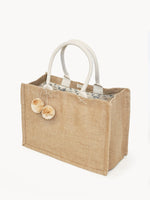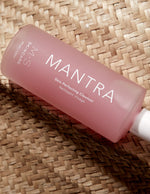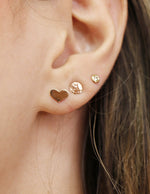
IN THIS ARTICLE
From the delicate summer sweetness of a Languedoc Rose to a gummy mouthful of Chianti or the mineral waters of Sauvignon Blanc, wine truly is its own mesmerizing world. If you want a little background on understanding how alcohol content affects more than your ability to drunk text your ex, we have the lowdown right here.
Knowing more about the ABV isn't just about picking a drink that fits your tolerance level, it's also about knowing how a lower or higher ABV can impact every inch of your wine. ABV seeps into everything from taste to style and with just a hint of backdrop knowledge you can make better decisions about your drink.
And we want you to make better decisions when it comes to drinking wine.
So here is everything you need to know when choosing your next bottle.
How Wine Alcohol Content Works

Wine Alcohol Percentage And Alcohol-by-Volume (ABV)
OK, you may have picked your wine bottle depending on the numbers and how much of a party mood or casual drinking mood you were in. ABV stands for alcohol by volume aka how much ethanol is in the amount of liquid. This can range from 5% to 16% generally when it comes to wine, although fortified wine can be higher - going up to as much as 25%. Most unfortified wine comes in at around 11-12% and most fortified wines can land at around 18%.
tl;dr The wine's alcohol level will vary depending on the kind of wine you are drinking and how much booze the winemaker wanted to bring to their bottle.
How Alcohol Content Affects The Taste Of Wine
Wine can be a delicate dance. People go crazy about the wide array of tasting notes - there are aromas and structure and grape variety and tannins and then there's the alcohol content.
Yep, content can bring its own shade to the party.
The structure of wine is all about hitting the right beats between sugar, tannin, acid, and alcohol. For wines with low tannin levels, too much alcohol will give the wine a heat similar to liquor which may also affect how thin or thick the wine feels on the tongue.
High alcohol wines can also feel fuller or more viscous in comparison to low alcohol wines, which may be lighter. You probably recognize this description from thinking about how red wines taste 'heavier' and 'rounder' in comparison to cold, clear white wines.
One way in which alcohol levels can affect wine is also based on the person drinking it. This is why personal taste plays such a major role in wine tasting. Different people perceive alcohol as tasting different - for some it may taste sweet and to others bitter. Part of it really hangs in your own flavor makeup.
How The Fermentation Process Impacts ABV
Fermentation is how you turn grape juice into wine. It happens when the yeast found on grape skins reacts with the natural sugars in the juice. Throw in some heat and carbon dioxide and you have alcohol. The yeast keeps on feeding until the wine is fermented and dry and all sugar has been turned to alcohol.
How Much Alcohol Is In Wine? It Depends.

Red Wine Alcohol Content
Red wines tend to have a higher alcohol content than other wines and not by accident. Because red wines have higher tannins (the flavor and color that comes from grape skins) the winemakers have room to play. Tannins tend to be rather bitter so the structure invites those crafting the wine to balance everything out with more sugar, alcohol, or acidity. For example when you compare something like a gentle French Beaujolais with a high tannin busty Italian Barolo, you will see this difference in play.
Most red wines sit between 12-15% ABV. This is also because red grapes tend to be harvested later in the season and therefore as the grapes ripen in longer spells, the sugar count goes up. In fermentation that invites more alcohol.
White Wine Alcohol Content
White wines have more acidity in their makeup than reds and also no tannins bringing that bitterness. Those white wines that have lower alcohol and high acidity tend to be super refreshing and exactly what we dream of when it comes to picking the perfect bottle for a lunchtime picnic on the beach or beneath the vines.
White wine comes in between 5-14% with most hitting the 10% mark. As white grapes have lower sugar levels than red grapes, the sugars convert to ethanol at a much lower rate too. As the sugar increases with white wine grapes it becomes a balancing act as the growers need to pluck those grapes before the acidity levels drop. . This is one of the main reasons why white wine can be so light, delicate, and refreshing.
Port Wine Alcohol Content
Dark and heavy, port is a kind of sweet red wine that comes from Portugal (hence the name). This is one of the higher alcohol wines as it hits an average of about 18% but can go as high as 20%. Port is a fortified wine created by distilled grape spirits being added to the mix during fermentation. This halts the sugar content in the wine from being turned into alcohol which is why you get that sweet wine taste.
Rosé Wine Alcohol Content
Rosé sometimes gets a bad rap but this pink delight is super sophisticated and stylish and makes for a wonderful lunchtime sip especially in the soft summer months. It averages out at around 12% when it comes to alcohol content. Rosé straddles that line between red and white and brings with it a hint of the best of both worlds. It is fermented with the grape juice (and by proxy the grape skins) for a short amount of time, which is how it gets its color. But it's not a real red, which is why you get those light and zesty tasting notes that we would often associate with white.
Moscato Wine Alcohol Content
A sweet and gummy dessert wine, Moscato is a low alcohol wine that sits between 5-7% usually. It's made from the same kind of Italian grapes that make raisins which gives a hint at how it hits those naturally sweet notes that lean heavily into fruity flavors like citrus or peach. The natural level of sugars present is why it tends to be served as an after-dinner wine.
Wines With A Low Alcohol Content

Low alcohol wines tend to be light and sweet, think Italian Moscato, German Riesling, and sparkling style wines from northern Italy. The wines with less alcohol tend to come from cooler climates where maybe the grapes don't ripen as easily as those found in warmer climates. These are the wines you can expect to have a lower alcohol level...
- Italian Moscato
- German Riesling
- Muscadet
- Gruner Veltliner
- Italian Sparkling Wine
Wines With A Moderate Alcohol Content

Hailing from those spots with lots of sun but also cooler temperatures to boot, for those middle-of-the-road alcohol content wines, you are looking at the likes of a New Zealand Sauvignon Blanc, French wines, and popular wines from northern Italy like Pinot Grigio, Gavi, or Soave. These are the wines you can expect to have an average alcohol content...
- Pinot Grigio
- Bordeaux
- Beaujolais
- Sauvignon Blanc
- Chianti
- Rose Wines
Wines With The Highest Alcohol Content

Long hot days and an endless growing season make for wines with high alcohol content. All that pouring bright sunshine encourages fat grapes and faster sugar development - which adds to higher concentration of alcohol. A high alcohol wine will be something like a California Zinfandel or even a Cali Cabernet Sauvignon. High alcoholic content can also be found in wines from the south of France. These are the high alcohol content wine types...
- California Chardonnay
- Zinfandel
- Argentine Malbec
- Viognier
- Shiraz
- Chateauneuf-du-pape
- South African Chenin Blanc
At the higher end of the wine spectrum, you get to those big bold dessert wines like ports and sherries such as Portuguese Madeira wine and other kinds of fortified wines.
Now you have a good chunk of info on the potential alcohol content in modern wine, you can make choices that work for you and your taste buds. For example, if you know that you like wine that is light and sweet, you can check the label and play around with wines on the lower alcohol content spectrum. On the other foot, if you love wines that taste bolder, you may want to catch those intense flavors with wines that are on the higher end of the alcohol content level.
So there you have it, a quick and easy guide on how simple grape juice becomes the alcoholic drink we know and love. We hope this info invites you to make informed decisions when it comes to your fave bottles in the future. Let us know which wines you are loving. Are you all about the fizz of champagne or do you prefer a Spanish Rioja? Does a Chilean Merlot make you go gaga or are you more into the zesty punch of a Portuguese Vinho Verde? Let us know your thoughts in the comments.
























 TOP
TOP



